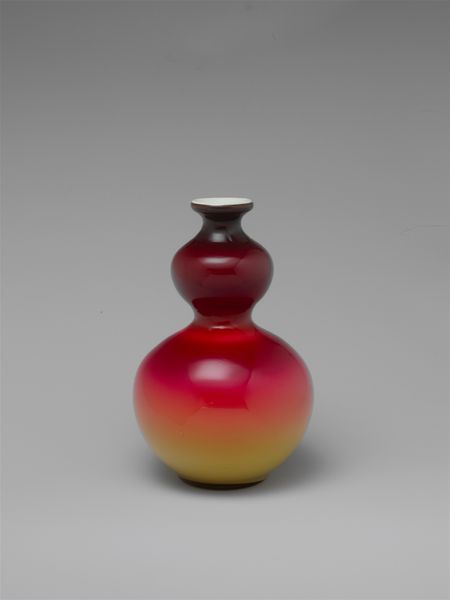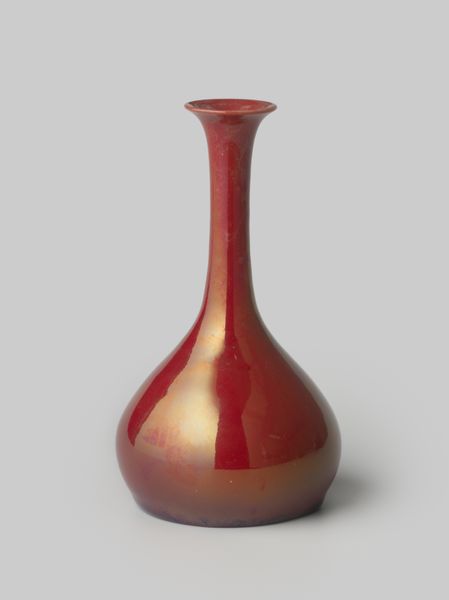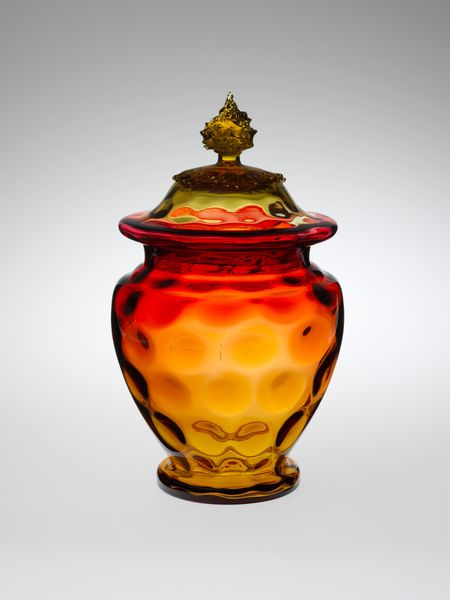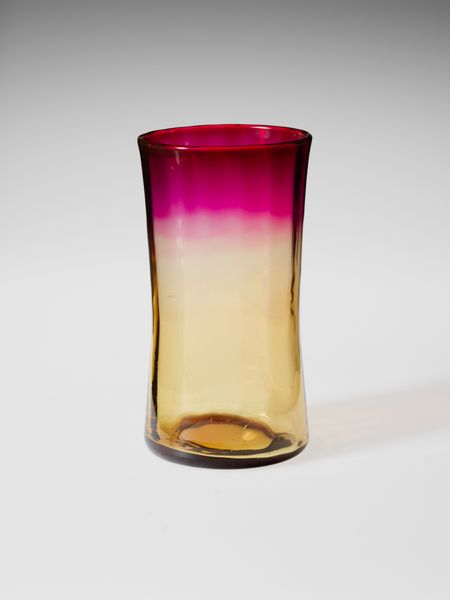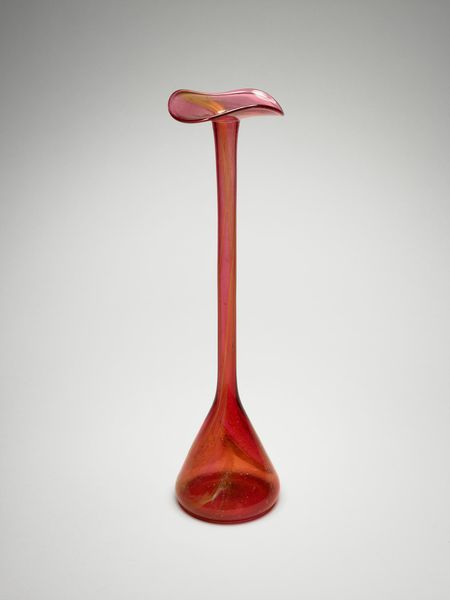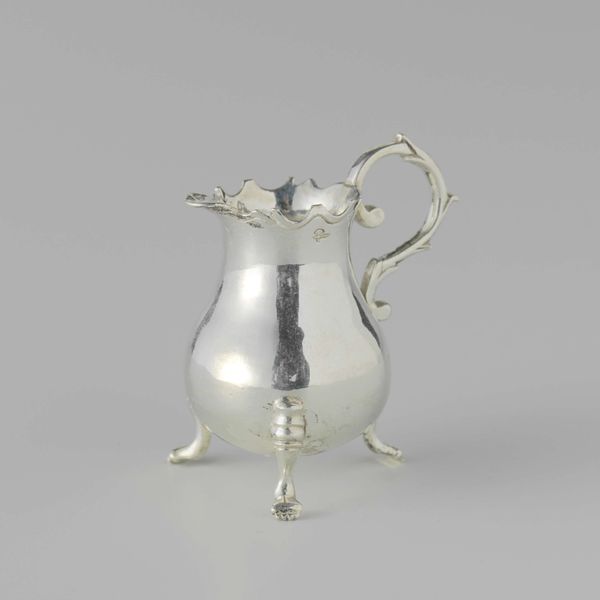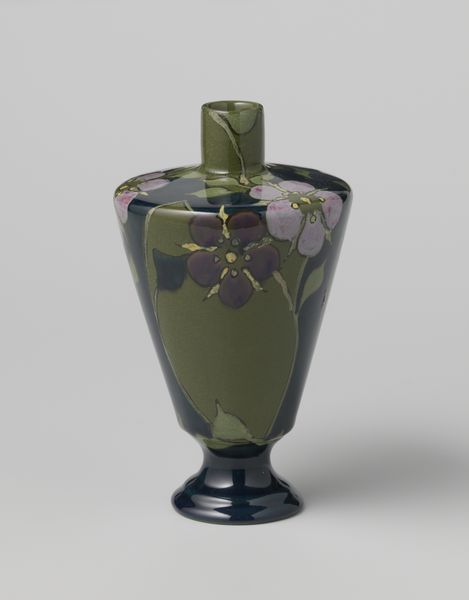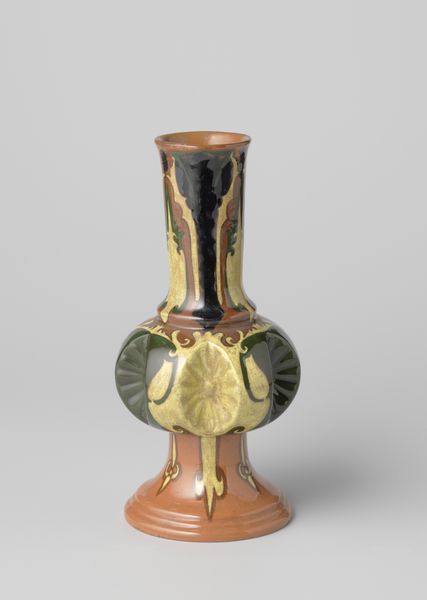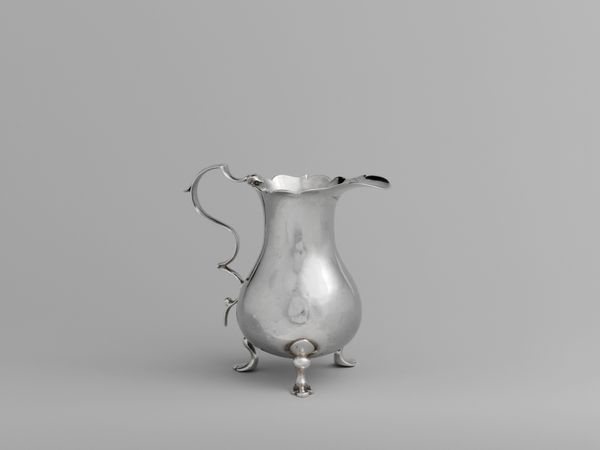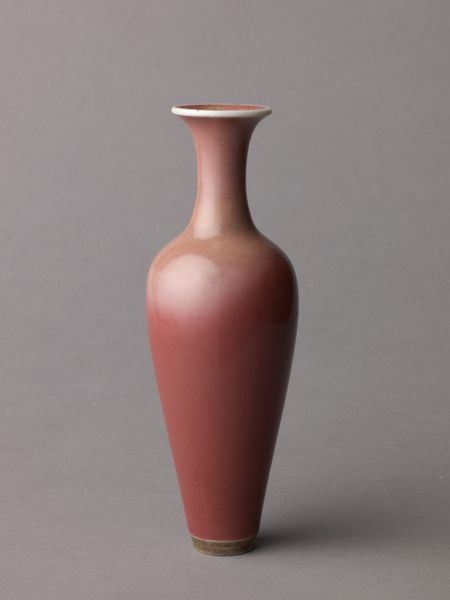
glass
#
glass
#
united-states
#
decorative-art
Dimensions: Height: 10 in. (25.4 cm)
Copyright: Public Domain
Curator: Here we have the “Morgan Vase” and stand, crafted by Hobbs, Brockunier and Company sometime between 1886 and 1891. It is currently housed here at the Metropolitan Museum of Art. Editor: The vase really catches my eye, doesn’t it? It has an interesting combination of vibrant, almost aggressive color with a very refined shape, poised on that elaborate stand, of course. There’s tension between power and control there, definitely making a statement. Curator: Well, let’s dive into how it was made. This object showcases American glassmaking during a time when companies like Hobbs, Brockunier were competing fiercely with European manufacturers. It involved skilled glassblowers, mold makers, and decorators, all working under intense pressure to meet market demands. Consider the division of labor, the industrial processes adapted to create what appears, at first glance, as a purely aesthetic object. Editor: And let's also remember the social landscape! The late 19th century was a period of massive industrial growth, urbanization, and social upheaval. Objects like this vase, owned and displayed by affluent families like the Morgans, reflected social aspirations, colonial power, and evolving concepts of beauty, class, and status. The very act of acquiring and showcasing it was loaded with social and political significance. Curator: Absolutely. And speaking of making, the ombre effect that you initially keyed into…the controlled, careful graduation of color from vibrant red to a milky peach or pale yellow… it all points to complex glassblowing techniques, right? Maybe acid etching for that smooth finish? They had such a wide range of skilled specialists, and the stand itself looks like another product altogether. It makes you wonder who designed it. Editor: Definitely. And there’s something unnerving to me about the choice of figures holding it. Dogs or lions—symbols often connected to colonial domination—literally upholding this fragile glass object… How does its beauty stand, situated, and literally resting on this power dynamic, right? It cannot be extracted from the history of labor. Curator: Precisely. When we look at objects like the “Morgan Vase” and stand, we aren't just admiring their beauty; we're examining the physical manifestation of historical processes, right? Consumption, technological development, artistic production. Editor: Right. Recognizing that art isn't just about aesthetic pleasure, it's a mirror reflecting the socio-economic realities that shape it—and, really, that’s where it starts becoming something else entirely, maybe useful.
Comments
No comments
Be the first to comment and join the conversation on the ultimate creative platform.
